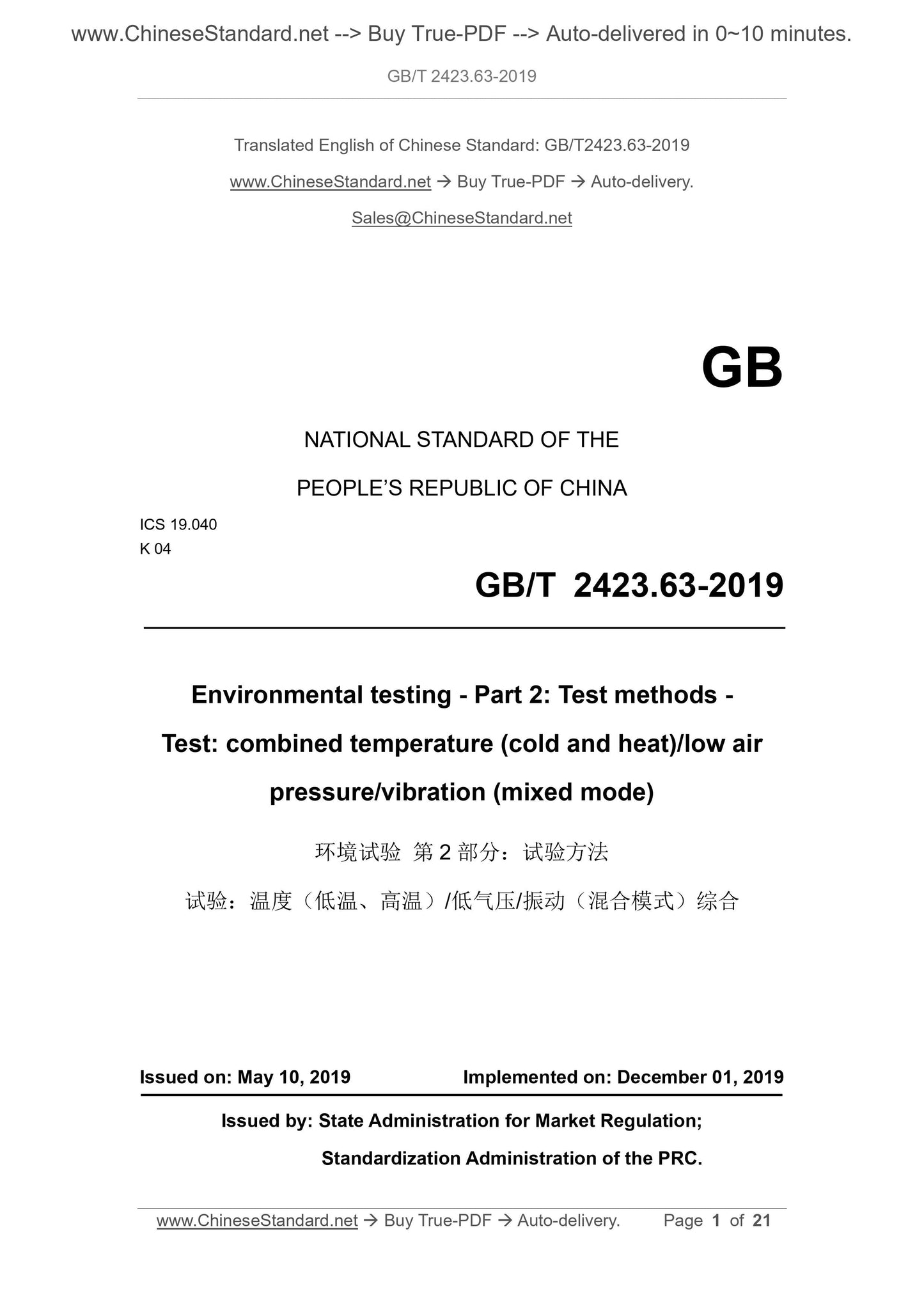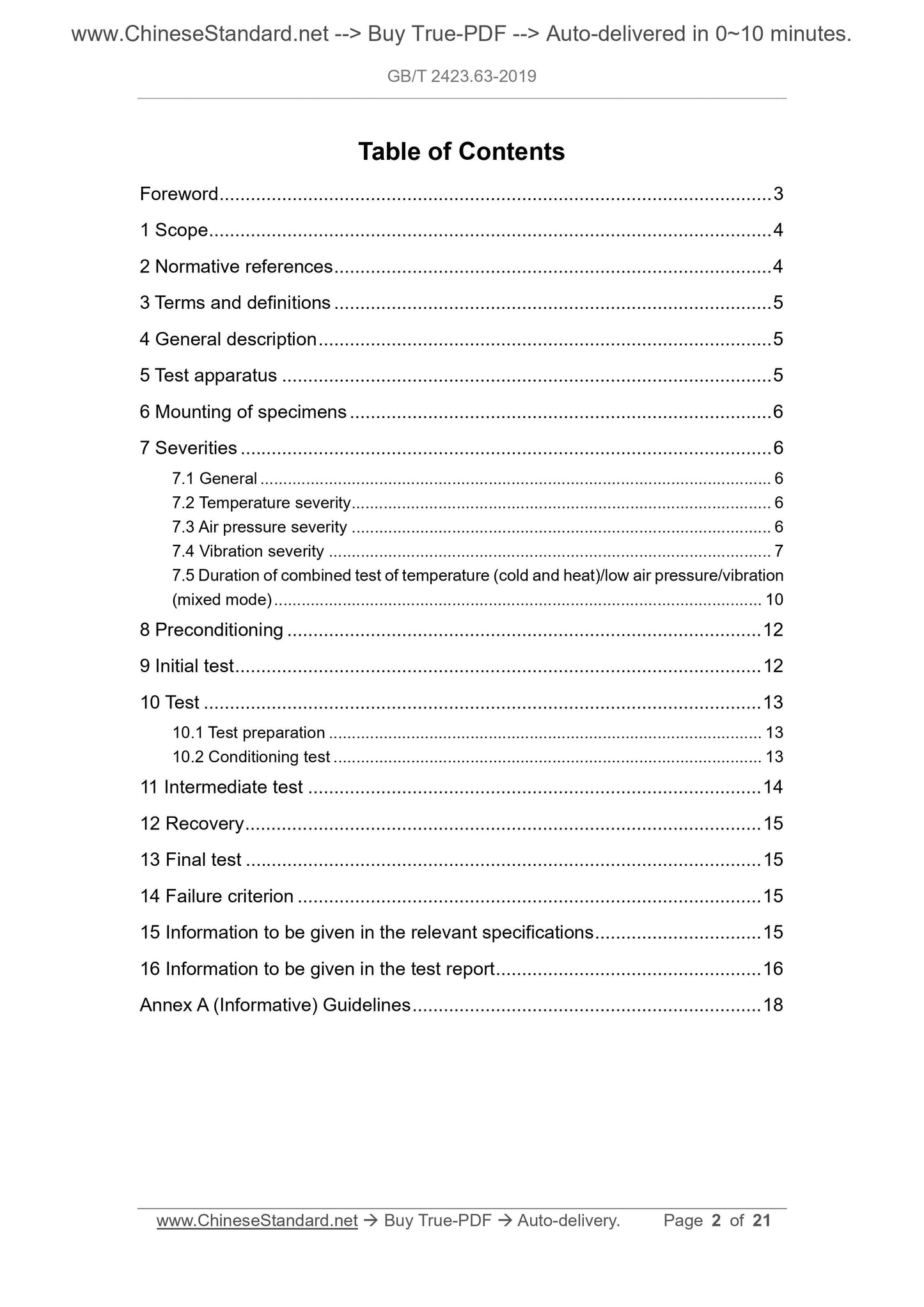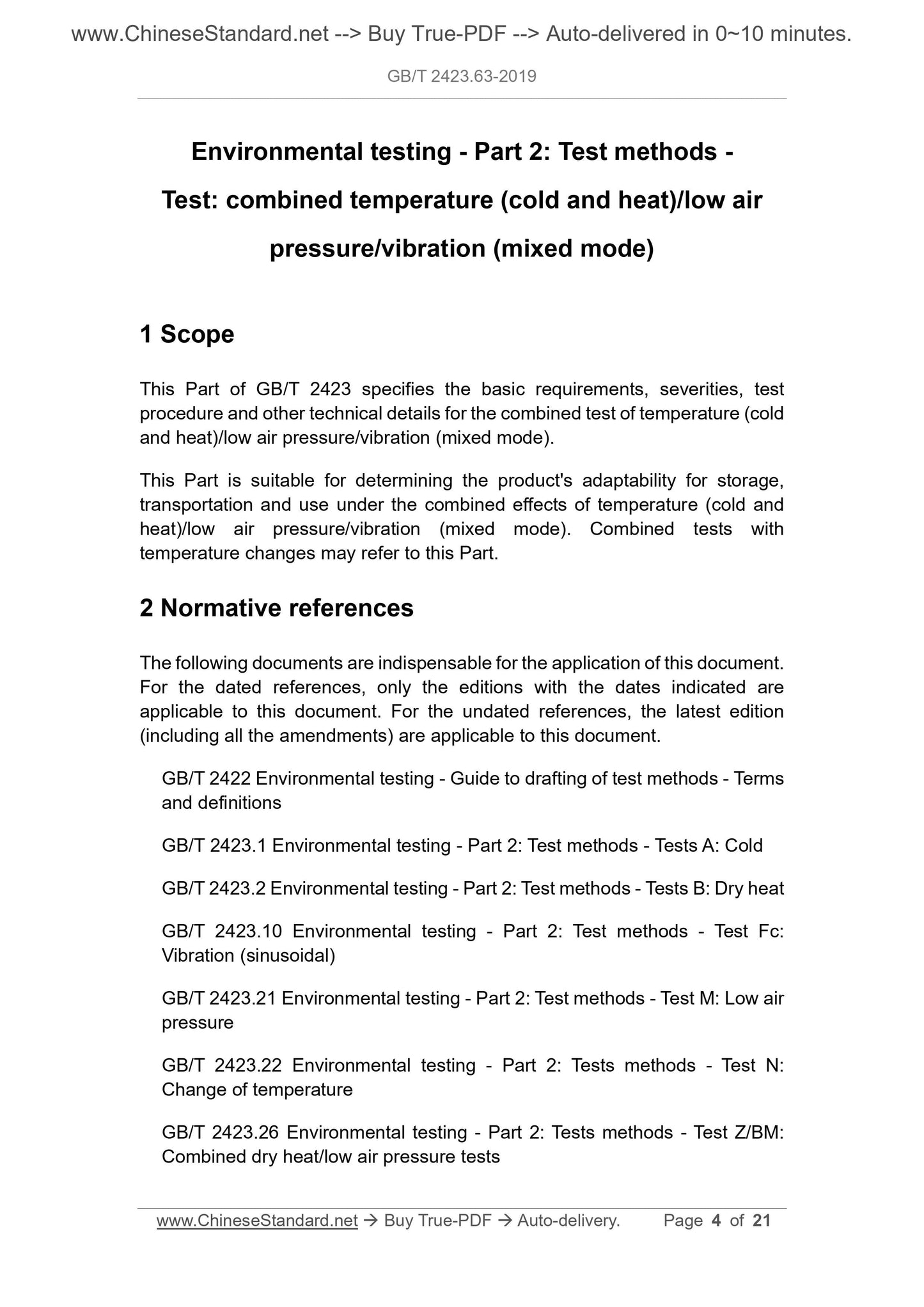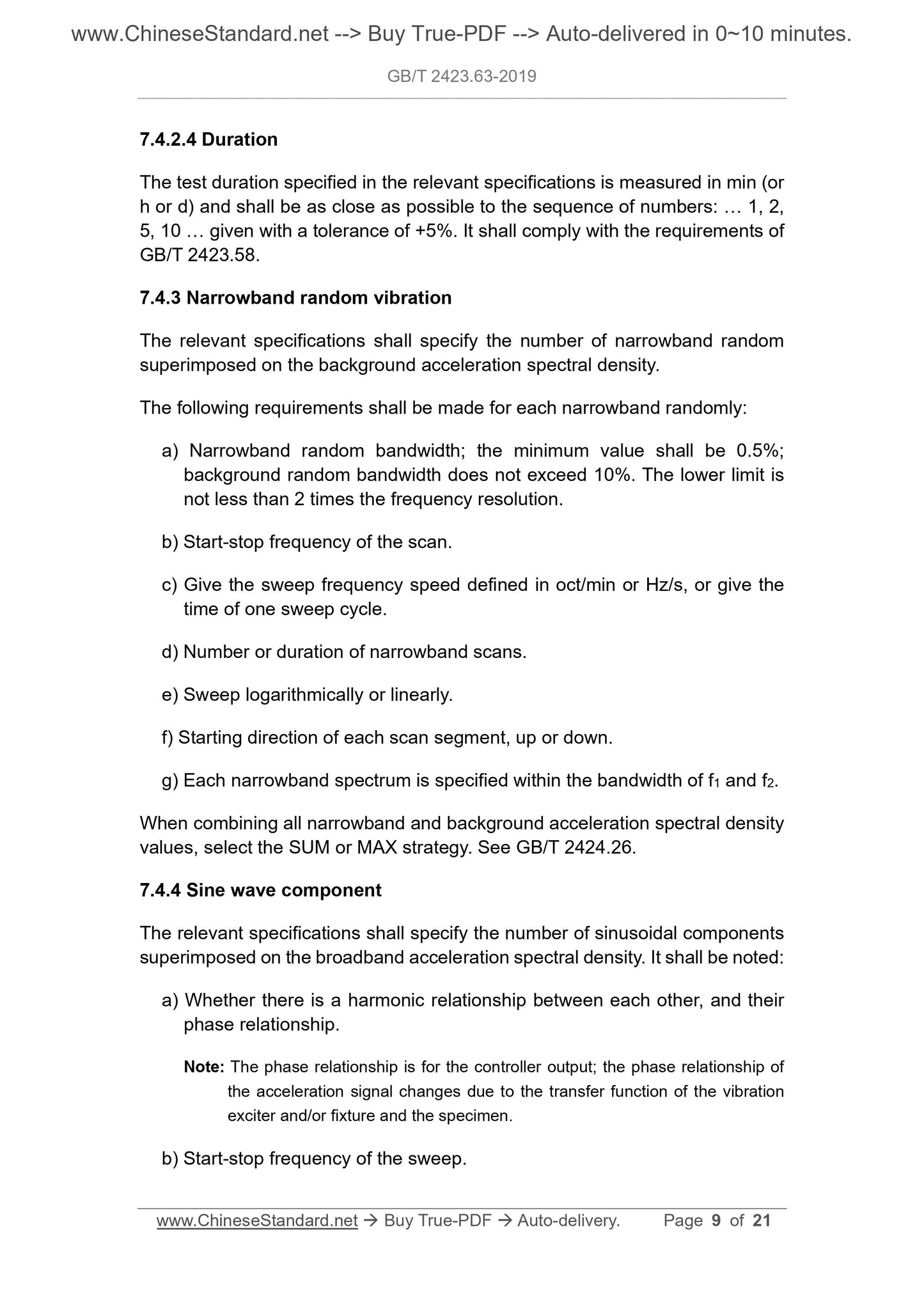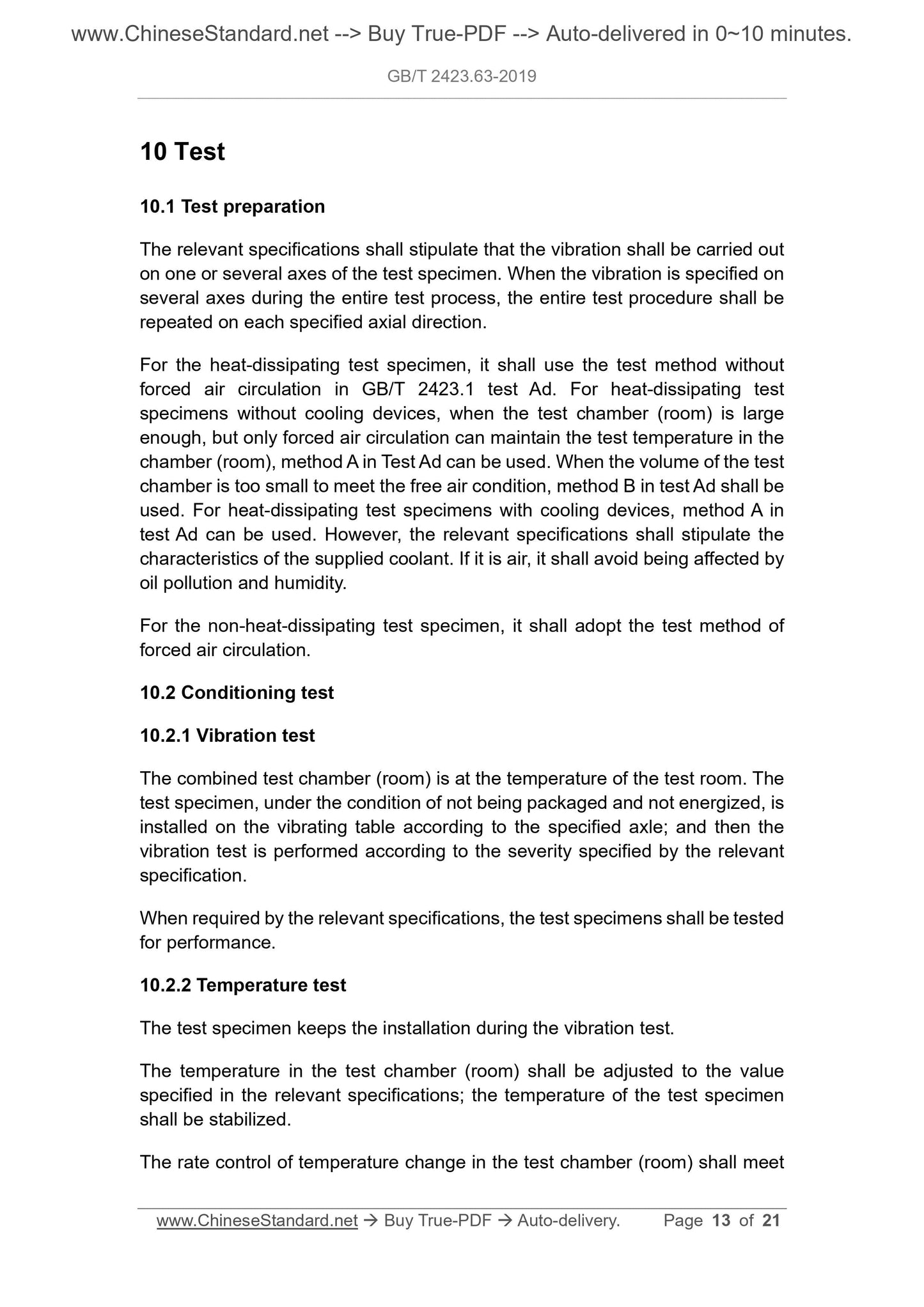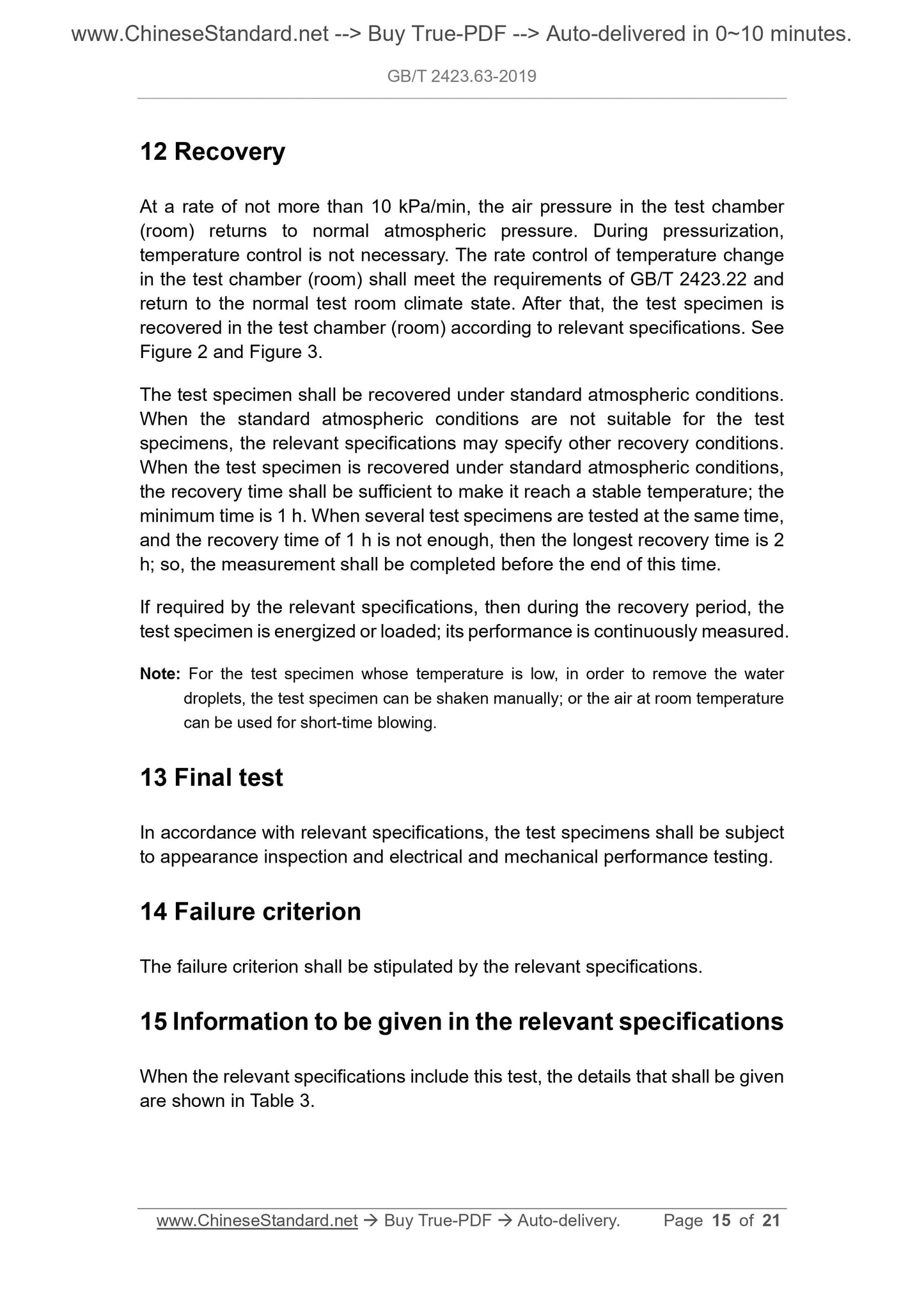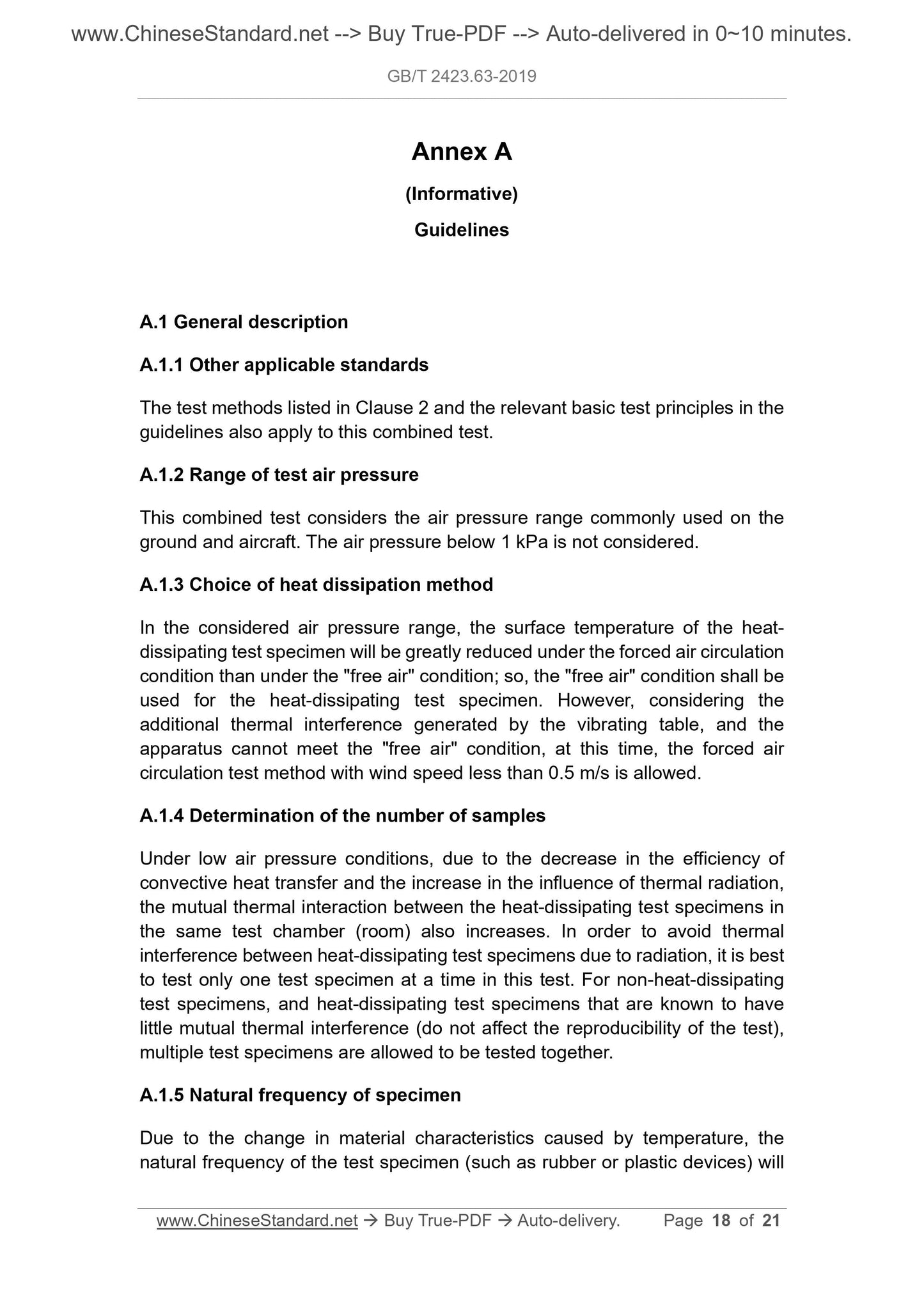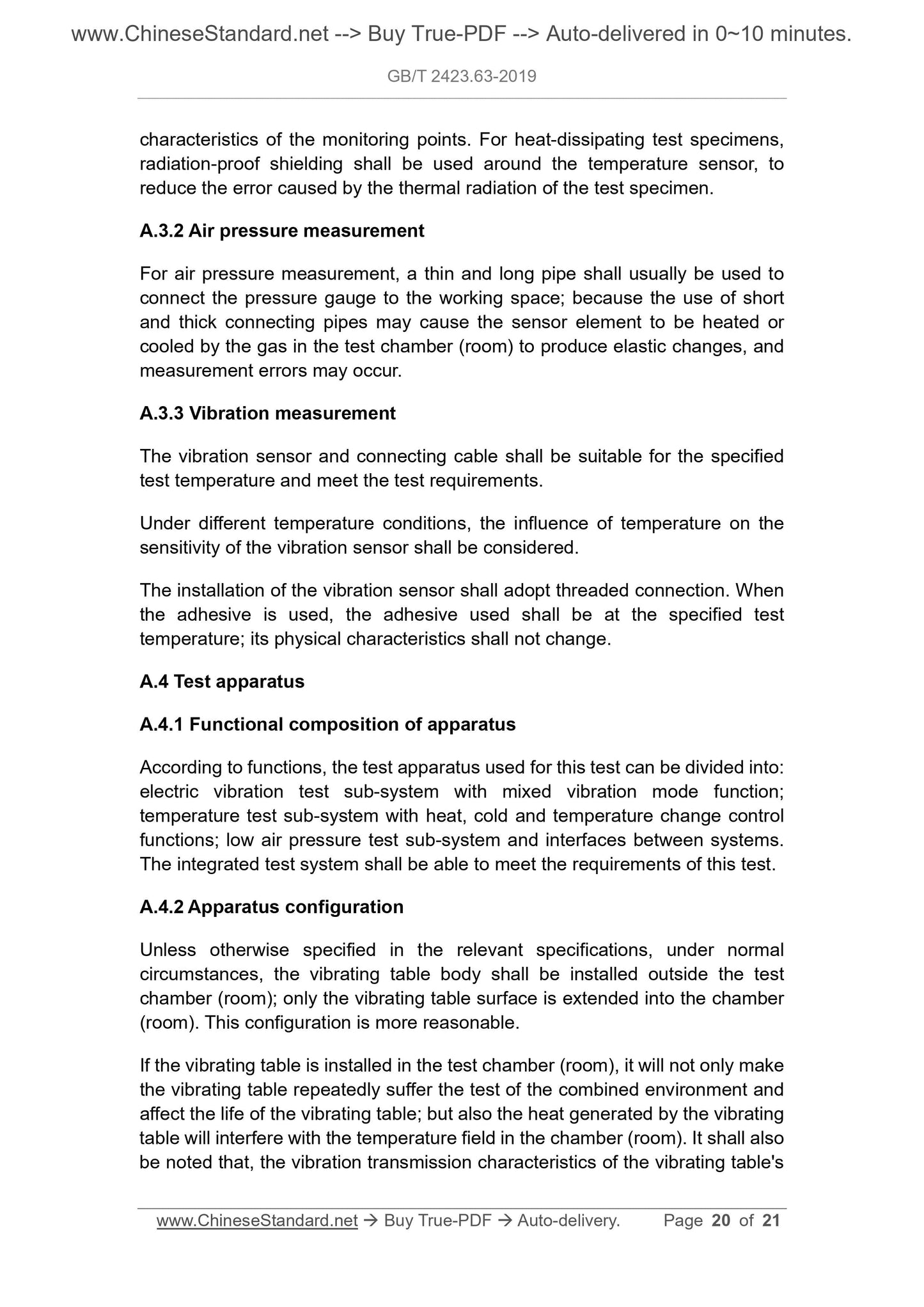1
/
of
8
www.ChineseStandard.us -- Field Test Asia Pte. Ltd.
GB/T 2423.63-2019 English PDF (GB/T2423.63-2019)
GB/T 2423.63-2019 English PDF (GB/T2423.63-2019)
Regular price
$260.00
Regular price
Sale price
$260.00
Unit price
/
per
Shipping calculated at checkout.
Couldn't load pickup availability
GB/T 2423.63-2019: Environmental testing - Part 2: Test methods - Test: combined temperature (cold and heat)/low air pressure/vibration (mixed mode)
Delivery: 9 seconds. Download (and Email) true-PDF + Invoice.Get Quotation: Click GB/T 2423.63-2019 (Self-service in 1-minute)
Newer / historical versions: GB/T 2423.63-2019
Preview True-PDF
Scope
This Part of GB/T 2423 specifies the basic requirements, severities, testprocedure and other technical details for the combined test of temperature (cold
and heat)/low air pressure/vibration (mixed mode).
Basic Data
| Standard ID | GB/T 2423.63-2019 (GB/T2423.63-2019) |
| Description (Translated English) | Environmental testing - Part 2: Test methods - Test: combined temperature (cold and heat)/low air pressure/vibration (mixed mode) |
| Sector / Industry | National Standard (Recommended) |
| Classification of Chinese Standard | K04 |
| Classification of International Standard | 19.040 |
| Word Count Estimation | 18,120 |
| Date of Issue | 2019-05-10 |
| Date of Implementation | 2019-12-01 |
| Issuing agency(ies) | State Administration for Market Regulation, China National Standardization Administration |
Share
